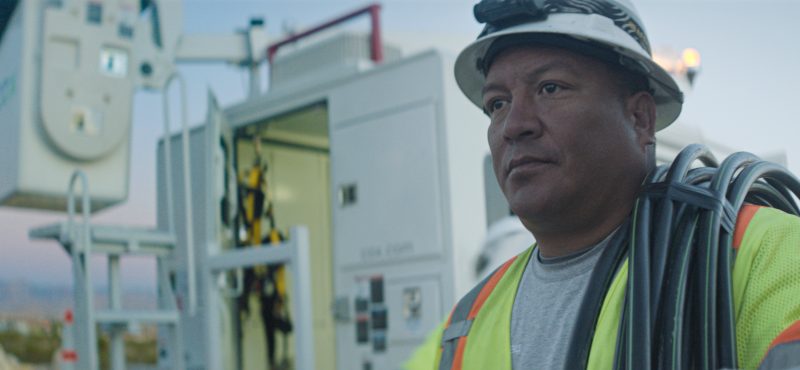Labor Day is fast approaching: a time to reflect on the contributions made by generations of workers throughout our nation’s history. This year, we want to shine a light on the employees who kept the nation’s broadband infrastructure up and running throughout the COVID crisis.
Despite 18 months of turbulence and increases in network traffic of over 40%, America’s broadband infrastructure—and the social, educational, and economic connections it enabled—was the one thing that many of us could count on. Behind this network resilience were thousands of essential personnel working quietly around the clock to make sure our country stayed connected. Let’s take a look at four ways essential workers kept the vital lines of broadband open, and used that unfailing connectivity to keep us informed and entertained.
- Out in the field
Field technicians like Midco’s Brad Hoff have seen their workload nearly double during the pandemic—and they were up to the challenge. “You might have five people working from home now for 12 hours a day. You have mom and dad home, and kids are now schooling from home,” he says. “So maybe they need faster internet now to accommodate their new scenario, so we are there to help with that.” In addition to his extended hours, Hoff has also been active in installing free internet for families with school-age children, thanks to a series of partnerships between broadband providers, community organizations, and state and local governments. - On the screen
Programmers have also had to adapt their lineups for audiences hungry for news and entertainment. According to Donna D’Alessandro, senior vice president of programming at the Discovery Channel, it was a question of stepping on the gas and “leaning in further.” This meant everything from creating new shows (like Josh Gates Tonight) to changing the content of existing ones (like Moonshiners, whose stars switched from creating moonshine to making hand sanitizer). Many channels also started pulling out older shows for the sake of nostalgia, like Cash Cab, Gold Rush, and MythBusters. According to D’Alessandro, the ability to be so agile stems from “constantly fine-tuning and listening to the cultural changes…that are going on in the world.” During a time of high stress and uncertainty, these programmers are listening to their audiences’ needs. - Over the phone and online
Broadband customer service representatives have also had to handle a spike in their workloads—often while working from home. This challenge was further heightened by COVID protocols that prevented technicians like Brad Hoff (above) from entering homes except in the most extreme circumstances. According to Midco’s Vice President of Customer Experience Cory Limberg, the company created a “no-contact interaction” model by relying on phone calls, chat, SMS, online resources, and even virtual visits via their mobile platform Blitzz. Fortunately, Midco had already launched their “Easy to Do Business With” strategy for frictionless customer service before the pandemic. This gave Midco the experience and tools it needed to support customers when the crisis hit. - On the Shoot
Showrunners wear multiple hats to keep the production of shows running smoothly, from writing and editing to hiring and casting. But when the pandemic hit, all of that came crashing down. National Geographic alone had to cancel 77 productions in dozens of countries. Fortunately, showrunners quickly found ways to get back on the job and maintain a high quality of storytelling while respecting health and safety protocols. This required navigating ever-changing airport regulations, working in small pods, having health managers on set, and even working with filmmakers worldwide to shoot wildlife in their region. “National Geographic has been amazing in working with us day and night to get the proper protocols in place and greenlight various shoots,” says Lisa Bloch, showrunner of the series Category Six. Thanks to the hard work of showrunners, audiences haven’t run out of inspiring entertainment while under lockdown.
Honoring Our Essential Workers
Invisible but all around us, essential broadband employees like these have maintained our critical internet services and found creative ways to continue producing the shows we love. This Labor Day, let’s not forget their titanic efforts when we hop on a Zoom call or stream a show with our families.
Want to do more to support broadband in our country? Find out how you can get involved in the campaign to bring high-speed broadband to every American here.
